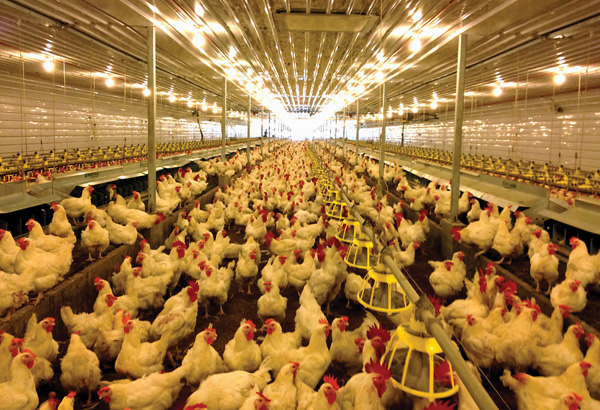DA confirms bird flu outbreak in Pampanga
August 11, 2017 | 3:55am

The Agriculture department is looking at two possible sources of the virus. First are the migratory birds and second is the ongoing smuggling of Peking duck from China, which was possibly coursed through the Subic area. File
MANILA, Philippines (UPDATED 6:30 p.m.) — The Department of Agriculture has confirmed an outbreak of avian influenza virus (bird flu), the first case for the country, in San Luis, Pampanga which killed close to 40,000 poultry heads and placed the province in a state of calamity.
Agriculture Secretary Emmanuel Piñol reported that test specimens confirmed the presence of highly pathogenic avian influenza (HPAI) subtype H5 in the town of San Agustin in San Luis, Pampanga, killing 37,000 birds covering six farms particularly poultry, quail and ducks.
"There were said to be indications as early as May but the commercial poultry operators did not report it immediately. Then the situation worsened around July," Piñol told reporters.
The province of Pampanga has been placed in a state of calamity as declared by Gov. Lilia Pineda.
While there has been no report yet of poultry to human contamination, the DA has decided to cull the other 200,000 captive birds, valued at approximately P17 million, within the town to avoid the spread of the virus.
“All fowls within the one-kilometer quarantine radius will be culled and buried. No chicken fowls will be brought out. Quarantine teams are now guarding the exits of San Luis to disinfect all vehicles coming out of the area,” Piñol said.
The department maintained that culling the rest of the poultry population in the area is necessary to control the spread of disease in the shortest possible time as the remaining 200,000 may also be infected with bird flu.
The DA targets to finish culling the animals in the next three days and the government said it will compensate farmers whose fowls will be culled.
"I don’t care if we have to kill a million including those free range and stray fowls. What is that compared to the whole poultry industry? We have to do it because we don’t want the disease to spread," he added.
The H5 bird flu virus that hit the Philippines causes 80 to 100 percent mortality in the poultry industry.
Majority of the affected birds are layered chickens which produce table eggs and products of the farms are being delivered within Pampanga only, which lessens the threat of bird flu spread in other areas particularly in Metro Manila.
The Agri chief assured that there has been no reported spread of the virus in the nearby provinces of Pampanga.
DA-attached agency Bureau of Animal Industry is now in the process of sending the samples to the Australian Animal Health Laboratory, a World Organization for Animal Health (OIE) Reference Laboratory for avian influenza for further testing.
While virus transmission from animals to humans is low, the Department of Health advised the public to immediately report residents who might show symptoms of flu.
Piñol said initial reports showed that the first outbreak started in a certain quail farm, killing around 50 of the 70 ducks, wiping out all the quails, and eventually spreading in the poultry farms.
San Luis is a highly agricultural town where the dominant crop is palay, followed by vegetables and orchards. Agri-business like inland fish culture, poultry, piggery and other livestock raising is also present.
It serves as a satellite municipality of Pampanga urban centers, being a major supplier of food.
Tracing the source
For the longest time, the Philippines is one of the few countries in Southeast Asia that remains free from the dreaded avian influenza virus.
The virus, which resurfaced in Asia in 2003, crippled poultry industries in neighboring countries, such as Vietnam.
According to the Agri chief, DA and BAI are still tracing the possible source and carrier of the virus.
"We have two possible sources. First is the migratory birds and second is the ongoing smuggling of Peking duck from China, possibly coursed through the Subic area," Piñol said.
Apart from confining the area, the department has ordered the ban on the shipment of fowls from Luzon to the other parts of the country.
"The good thing about the situation is that we are an archipelagic country. If there’s an outbreak in Luzon, we can still prevent it from spreading in the Visayas and Mindanao," Piñol said.
Furthermore, the DA is now discussing its next course of action should there be a shortage of processed poultry products due to the outbreak of the virus, particularly as the Christmas season nears.
"It will obviously affect the food chain, especially we are nearing the -ber months. We have to increase the production of poultry and poultry products in Mindanao," Piñol said.
"We will have to find other sources for chicks and hatching eggs because majority really comes from Luzon," he added.
The DA, in coordination with the DOH, said it will continue to monitor the situation in Pampanga and the nearby provinces to ensure that the bird flu will no longer spread especially in major poultry producing areas.
BrandSpace Articles
<
>
Philstar
- Latest
- Trending
Trending
Latest
Trending
Latest
Recommended
































